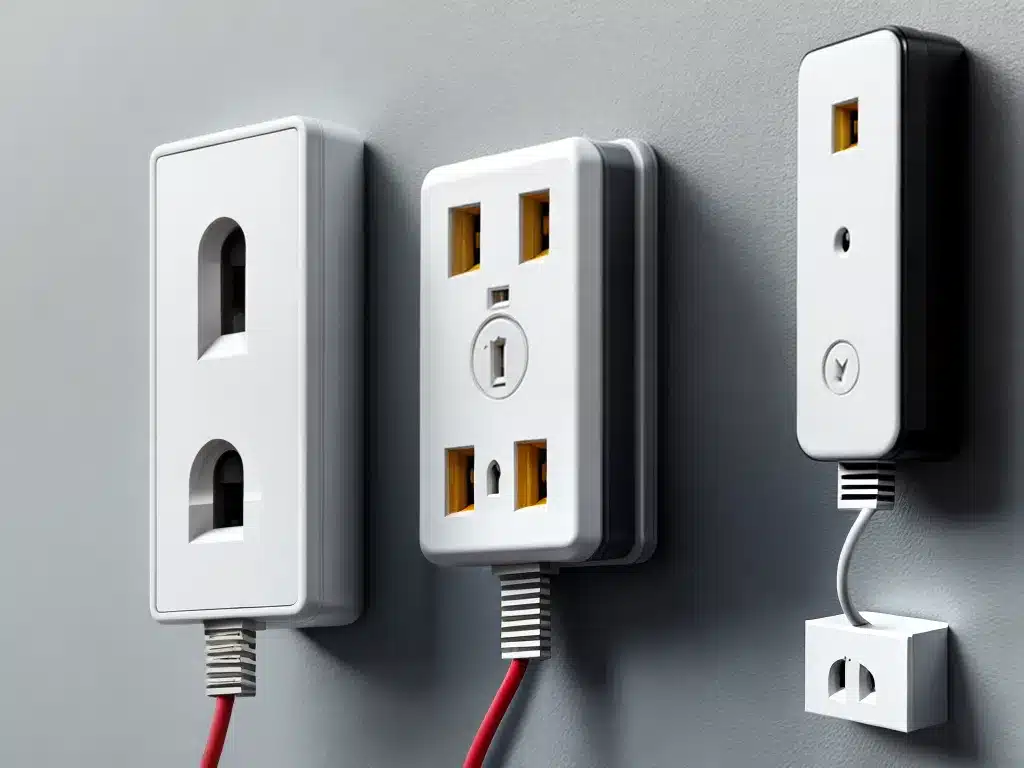
How the Humble Wall Plug Came to Power Our Modern World
The seemingly mundane wall plug has a surprisingly fascinating history. From the early days of electricity to the convenient standard we know today, the development of wall plugs reflects our insatiable desire for power and connectivity. In this article, I walk through the major milestones in the evolution of the wall plug and how it has enabled our modern, electrified world.
The Battle of the Currents
In the late 1800s, electric power was still in its infancy. Thomas Edison championed direct current (DC) as the way to electrify America. But Nikola Tesla and George Westinghouse advocated for alternating current (AC), allowing electricity to travel over long distances. This divergence became known as the “War of the Currents”.
Tesla and Westinghouse ultimately triumphed with AC. Their electrical systems needed transformers to “step down” higher voltages on transmission lines to safer levels for indoor use. This required a standard plug and socket to connect devices and lighting to these indoor supply lines.
Early plugs used two flat metal contacts on the male plug which fit into grooves in the female socket. This basic concept still forms the basis of the modern AC plug today.
The Safety and Standardization Movement
As electricity grew more common in households in the early 1900s, safety concerns came to the forefront.
-
Untrained DIY homeowners risked electrocution from faulty home wiring. Fuses and circuit breakers were adopted to prevent dangerous overload conditions.
-
Harvey Hubbell introduced the first enclosed “safety plug” in 1904 with an insulated casing to protect users from contact with live parts.
-
The lack of standards led to a dizzying array of incompatible plugs and sockets. Devices often couldn’t be used across different buildings.
This spurred efforts to define national and international standards for safer, interchangeable plugs and sockets. Important standards included:
-
1904: Hubbell’s safety plug sets precedents like prong spacing and sizing that influence later standards.
-
1913: The first national standard is adopted in the US, requiring plugs to have polarized and grounded contacts.
-
1940s: IEC 60906 standards emerge after World War 2 to enable interchangeable plugs across different countries and voltages.
The Rise of the 5-15 Plug
In North America, the NEMA 5-15 plug became ubiquitous by the 1950s. Some key advantages led to its dominance:
- Polarized and grounded prongs prevented shocks and enabled grounded appliances.
- 15 amps at 120 volts provided ample power for lighting and appliances of the era.
- Affordable and easy to manufacture.
- Relatively safe flat prongs versus early dangerous blade and pin designs.
The humble 5-15 plug became an unheralded icon of the booming post-war economy and suburban expansion. New electronics entered homes, enabled by 5-15 outlets conveniently installed in nearly every room.
Later standards like NEMA 5-20 provided an easy upgrade path to higher 20 amp circuits for larger appliances. The simple effectiveness of 5-15 ensured it remained compatible and relevant even to this day.
Powering the Electronics Revolution
Early home appliances relied on resistance heating using high current at low voltage. But the transistor revolution beginning in the 1950s enabled a dramatic shift toward compact, low power electronics.
Devices like televisions, radios, and calculators suddenly became commonplace. But one hurdle remained – how to connect these devices together with power cords and cables.
DIN connectors, RCA connectors, and VGA ports emerged as standardized ways to interconnect audiovisual equipment. Computing saw extensive use of large multi-pin connectors for printers, mice, and other peripherals.
Behind the scenes, small DC plugs like 5.5×2.1mm “barrel plugs” met the low voltage needs of electronics efficiently. Their compact size even enabled the first generations of mobile consumer electronics powered by batteries.
Meanwhile, the AC wall outlets and 5-15 plugs remained essential for primary power. Improved safety standards like polarized and grounded connectors prevented the rise of electronics from also causing a rise in electrocutions and fires.
Fuelling the Digital Age
The information age took off in the 1980s and 90s with extensive digital connectivity between computers, phones, and the internet. These innovations were supported by standardized power delivery and data transfer protocols.
Some notable developments:
-
USB became the standard for cables and chargers for electronics, enabled by improved DC power delivery standards.
-
Ethernet and Wi-Fi standards allowed high speed data networking.
-
** Smart power strips and surge protectors** enabled safe, connected infrastructure for home and office electronics.
-
International standards ensured compatibility of chargers across different regions and voltage ranges.
Yet the trusty 5-15 plug persisted through this digital transformation. Nearly all modern digital gadgets connect back to standardized wall outlets for reliable power. Safety standards also improved to account for modern electronics and prevent electric shocks and fires.
The advent of wireless power standards like Qi inductive charging represent the next evolution. But wall plugs remain essential as the wired backbone of our electrified world.
The Outlook for the Future
Nowadays we take wall outlets and plugs for granted – we expect power to be available everywhere, on demand. As we adapt to new challenges like climate change and transition toward renewable energy, demands on the grid and electrical standards will only increase.
Some key developments in our electrified future:
-
Smarter grids with two-way communication and monitoring to ingest distributed renewable generation.
-
Improved energy efficiency through advances like LED lighting.
-
** Safer, greener standards** for wiring and wireless power delivery.
-
Greater interoperability and smart features across devices and appliances.
The humble wall plug’s journey reflects the astonishing technological advances powered by our appetite for electricity. Far from being outdated, it will continue adapting to meet society’s changing needs. That’s why it remains an enduring icon of our electrified world.
